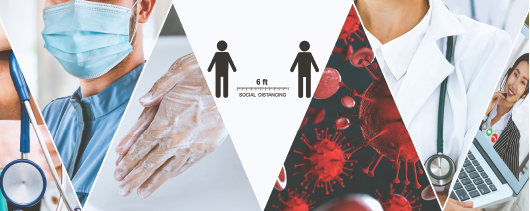In-Person Care Returns, Slowly
Colorado ENT and Allergy is close to a “back to normal” workload at its offices, but from March through early June, most visits were remote, using telemedicine. ENT Associates in Maryland also switched most appointments to telemedicine in mid-March, as soon as insurance carriers publicized the fact that remote visits would be covered.
Explore This Issue
August 2020“Telemedicine is challenging in otolaryngology because our examinations are almost physically impossible to do over a computer screen,” Dr. Dubin said. “We look inside deep, dark places. Telemedicine is a totally appropriate surrogate for office visits that don’t require physical exams; imaging reviews or tonsillectomy follow-ups are reasonable examples. Beyond that, though, so much of what we do is procedure-based. It’s impossible to do a meaningful hearing exam over the phone or look up someone’s nose or do an ear exam [using a webcam link]. Telemedicine did, however, allow for screening of patients to see if they truly justified an in-office visit during the peak of COVID-19 cases in our community.”
Although the Cleveland Clinic had some telemedicine systems in place before the pandemic, Dr. Hopkins and fellow otolaryngologists rarely used them before March, when virtual visits ramped up quickly. “We went from less than 5% to more than 60 to 70% virtual visits. I’m pleased that we’re opening up more platforms for telemedicine. The virtual visit isn’t the same as an in-person visit, however. There’s only so much you can do over telemedicine,” he said.
Physicians may conduct telemedicine visits unmasked, so their voices are less muffled, and patients who are deaf or hearing impaired may read their lips, Dr. Sie said. Still, telemedicine is far from ideal for patient communication. “When we conduct telemedicine visits, our faces are uncovered, but the audio can be distorted. Closed captioning can be very helpful, but this requires setting up a contract with the telemedicine platform.” Clear masks exist but are hard to find, she said.
Although Seattle Children’s Hospital is scheduling office visits, some families are reluctant to come in, Dr. Sie said. “We’re working to get telemedicine sites with carts to do otologic exams. Telemedicine is a good way to follow up, check in, or triage patients to see if kids need to come in or not.” Some families lack computers or internet access. Her department added a social worker in mid-April to help doctors address healthcare access disparities, such as identifying low- or no-cost computer resources.
Telemedicine likely is here to stay in otolaryngology, although in limited situations, Watson noted. “If we can market telemedicine as an option for initial consultations, such as a short visit with a patient who may have been seeing a primary care physician for sinus problems to see if they need to schedule an appointment with one of our specialists, it may be a less expensive, quick way to screen patients at home,” he said.

Helpful Academy Guidance
The American Academy of Otolaryngology–Head and Neck Surgery (AAO-HNS) released two comprehensive sets of recommendations regarding COVID-19 safety precautions, including one on May 7 for general practice settings and another on May 15 for surgical procedures in specialty areas. Otolaryngologists said these recommendations were useful as they devised specific precautions for their offices.
“The academy did a very nice job sending out recommendations using the best available information,” Dr. Dubin said. “COVID-19 disease penetrance and regulations differed and continue to differ from state to state and region to region. The guidance has been very helpful in parsing out the most useful information available in a common-sense approach.”
Dr. Hopkins and his colleagues also follow the AAO-HNS recommendations, which he calls helpful and broad, advocating for maximum PPE at all times. Cleveland Clinic issued its own internal guidelines for PPE use in each type of patient interaction.
“If an N-95 mask were perfectly comfortable, your patient could see you through it, and you could talk through it, that would be great,” he said. “But they’re hard to talk and breathe through. It can be difficult to wear them for an extended amount of time, with many finding it difficult for more than four hours. Even after 10 minutes, I start to feel confined.” Masks and other PPE are used during all aerosol-generating procedures at the clinic, and patients are tested for SARS-CoV-2 three days before any surgical procedure.
Dr. Sie follows AAO-HNS news releases for updated COVID-19 safety recommendations. “The information coming from the academy is very balanced and consistent with CDC recommendations. Some of the information coming from specialty societies hasn’t been evidence-based. Working in a pediatric hospital, we’re more tied to the CDC and state guidelines,” she said.